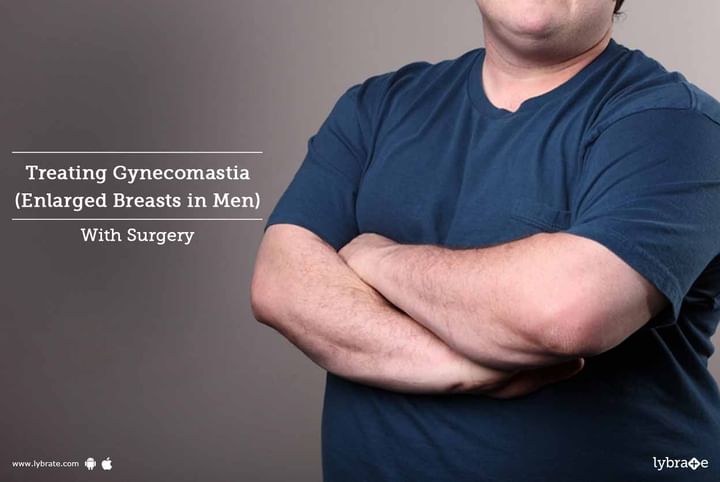Treating Gynecomastia (Enlarged Breasts in Men) With Surgery
Swollen breast tissues in men or boys caused by hormonal (testosterone and estrogen) imbalances is called gynecomastia. Both breasts or one breast, can be affected by gynecomastia. At any point in life, from birth to puberty, even in adulthood, you might develop gynecomastia. Most of the times, gynecomastia is caused by hormonal imbalances, but there might be some underlying causes as well.
Gynecomastia is normally not a serious condition, but it can be difficult to deal with the pain and embarrassment.
It can be cured with surgery or medication, if it doesn't go away on its own.
Symptoms and signs of gynecomastia include:
- Enlarged glands in the breast tissue
- Tenderness in the breast
The causes that trigger gynecomastia include:
- Hormonal changes: Testosterone and estrogen control the sexual development in men and women respectively. Estrogen is not a hormone that only women produce; men produce it too. When the production of testosterone and estrogen are thrown out of balance, gynecomastia occurs.
- Medication: Certain medications such as anabolic steroids, androgens, HIV/AIDS medicines, antibiotics and chemotherapy can cause gynecomastia.
- Drugs and alcohol: Substances such as alcohol, marijuana, amphetamines, heroin and methadone cause gynecomastia.
- Health condition: Certain factors, such as aging, hypogonadism (hormonal disorder), hyperthyroidism (overactive thyroid gland), tumors, kidney failure, cirrhosis, liver failure, malnutrition and starvation can lead to gynecomastia.
- Herbal products: Essential oils derived from plants such as lavender or tea tree, used in lotions or shampoos, have weak estrogenic actives. They have been said to cause gynecomastia.
Gynecomastia can be cured either with medication or surgery. Surgical options for gynecomastia are, however, limited.
Treatment
There is no definitive medical treatment. The main answer for Gynecomastia is -SURGERY. It is a daycare procedure in most situations. It is done by a Surgeon, usually, a Plastic surgeon does a better job.
Anesthesia- Either Local or General anesthesia is given to make it painless.
Procedure-Through a small incision in the areola, the swelling is removed by both Liposuction of the Fat part and Excision (removal) for Breast gland part. As the incision is through the areola, the final scar is hardly visible. In extensive swellings, skin also needs to be removed, where in a scar around the areola border is visible.
Recovery- usually can go back to work in 2-3 days time. If you wish to discuss about any specific problem, you can consult a Cosmetic/Plastic Surgeon.



+1.svg)
